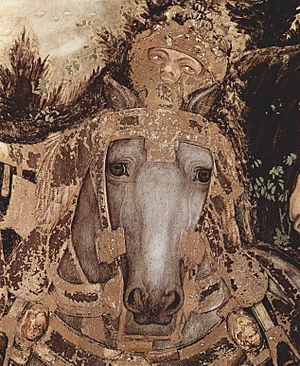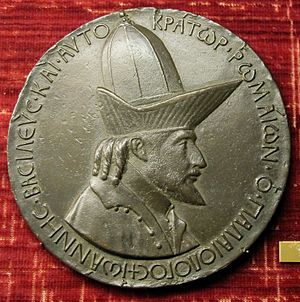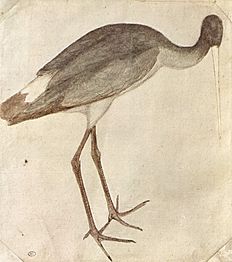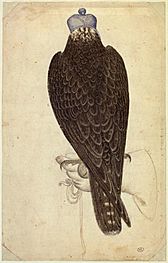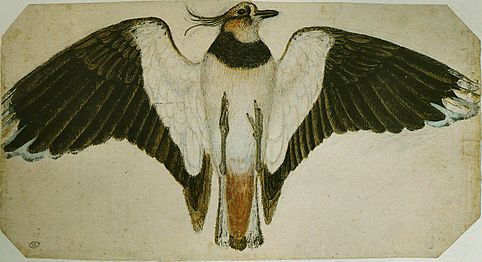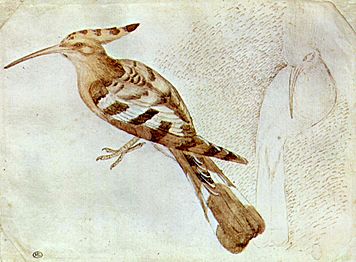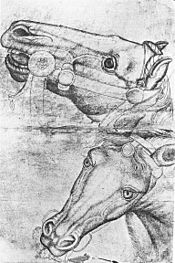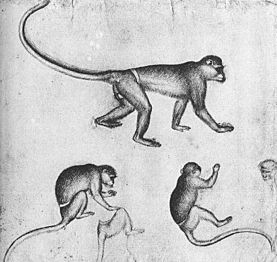Pisanello facts for kids
Quick facts for kids
Pisanello
|
|
|---|---|
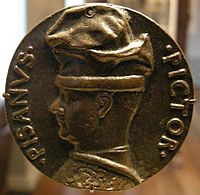
A medal showing the profile of Pisanello (1443), attributed to Antonio Marescotti
|
|
| Born |
Antonio di Puccio Pisano
c. 1380/1395 Pisa, Republic of Pisa
|
| Died | c. 1450/1455 (aged 55‒75) Naples, Kingdom of Naples
|
| Education | Gentile da Fabriano |
| Known for | Painting, frescos, medal |
|
Notable work
|
St. George and the Princess |
| Movement | International Gothic, Italian Renaissance |
Pisanello (c. 1380/1395 – c. 1450/1455) was a very famous Italian painter. His real name was Antonio di Puccio Pisano. He was one of the most important artists of the early Italian Renaissance. People like poets and scholars admired him greatly. They even compared him to ancient Greek artists!
Pisanello was known for his amazing frescoes (paintings on walls), beautiful portraits, and detailed drawings. He also created many special medals. He was the first artist to make these kinds of portrait medals. Many important people hired him, including the Doge of Venice, the Pope, and powerful families like the Gonzaga and Este.
Sadly, many of Pisanello's paintings have been lost over time. But we still have many of his drawings and medals today. Some of his works were even mistakenly thought to be by other famous artists like Leonardo da Vinci!
Contents
Pisanello's Early Life
Pisanello's early life is a bit of a mystery. He was born sometime between 1380 and 1395. He probably died between 1450 and 1455. He was born in Pisa, but he grew up near Verona. He likely learned to paint from an artist in Verona.
How Pisanello Learned to Paint
Between 1415 and 1420, Pisanello worked as an assistant to a famous painter named Gentile da Fabriano. Gentile taught him how to create very detailed and delicate art. Pisanello also learned to use rich colors and beautiful fabrics in his paintings from Gentile. They worked together on frescoes in Venice and Rome, but these paintings are now lost.
In 1422, Pisanello started working for the Gonzaga family in Mantua. He continued to work for them for many years.
Some people, like the artist and writer Giorgio Vasari, said that Pisanello also worked with Andrea del Castagno. Pisanello loved drawing horses, and some think he learned this from artists who painted many horses. However, we don't know for sure because much of his life is still unknown.
One of Pisanello's early paintings is called Madonna of the Quail. It is in a museum in Verona. This painting shows a mix of styles, suggesting he might have learned from more than one teacher.
Pisanello painted frescoes about hunting and fishing in Pavia around 1424. These were for the Duke of Milan, but they are also lost.
One of his important surviving works is the Annunciation fresco in San Fermo, Verona. He painted this between 1424 and 1426.
When his old teacher Gentile da Fabriano died in 1427, Pisanello finished the frescoes Gentile had started in Rome. These frescoes were later destroyed when the church was rebuilt. While in Rome, Pisanello became more interested in the classical style of Renaissance art.
Pisanello's Art Style
Pisanello's drawings are considered very special. They show the elegant clothes and amazing hats people wore in his time. Unlike other artists, Pisanello's drawings were not just practice for paintings. They were works of art on their own! He created several books filled with detailed drawings of animals, plants, and costumes. He drew them with a beautiful, natural style.
Traveling and Famous Works
Pisanello traveled to many Italian cities and met important people. He painted two important portraits during this time: one of Emperor Sigismund and another called Portrait of a Man.
He returned to Verona between 1433 and 1438. His most famous fresco from this time is Saint George and the Princess of Trebizond. It is in a church in Verona. This painting was damaged by water and had to be repaired. Pisanello made many drawings to prepare for this large painting. Many of these drawings are now in the Louvre Museum in Paris.
Portraits and Medals
From 1435, Pisanello became very interested in painting portraits and making medals. He painted a famous portrait of Lionello d'Este, a powerful leader.
Pisanello was one of the greatest medal makers ever! He was the first to create medals with a portrait on one side and a symbolic picture on the other. These medals were very popular with the powerful families in Italy. They showed leaders in profile, like old Roman coins. The other side had symbolic scenes or figures, often with mottos or symbols. Each medal was a true work of art.
Pisanello's painting The Vision of Saint Eustace is in the National Gallery in London. For a long time, people thought another artist painted it because it was so perfect. This small painting shows many animals in detailed poses. The story is just an excuse to show beautiful animals like horses, hunting dogs, and deer.
In 1439, Pisanello made a special medal for the Byzantine Emperor John VIII Palaiologos. This was one of the first portrait medals made after ancient times. He also drew pictures of the emperor and his group.
Pisanello invented the art of portrait medals. During his lifetime, he was most famous for these medals. He even signed his medals, saying "made by the painter Pisano." He believed the portraits on his medals were as important as those in his paintings. He also added symbols, like a unicorn on the Cecilia Gonzaga medal, to show the princess's noble qualities.
Later Life and Legacy
Pisanello lived in Naples from 1448 until the end of his life. He was very respected by the Aragon court there. He probably lived for five or six more years, but we don't have many records from that time.
Today, you can still see Pisanello's paintings in Rome, Venice, Verona, Pistoia, and the National Gallery, London. Many of his drawings are in the Biblioteca Ambrosiana in Milan and the Louvre in Paris.
Pisanello influenced many artists of his time. However, he didn't create his own school of art. After he died, people quickly forgot about him as new art styles became popular. But now, he is seen as the last and most amazing artist of the International Gothic style. He is also considered one of the first artists to lead the Renaissance movement.
Images for kids
See also
 In Spanish: Pisanello para niños
In Spanish: Pisanello para niños



